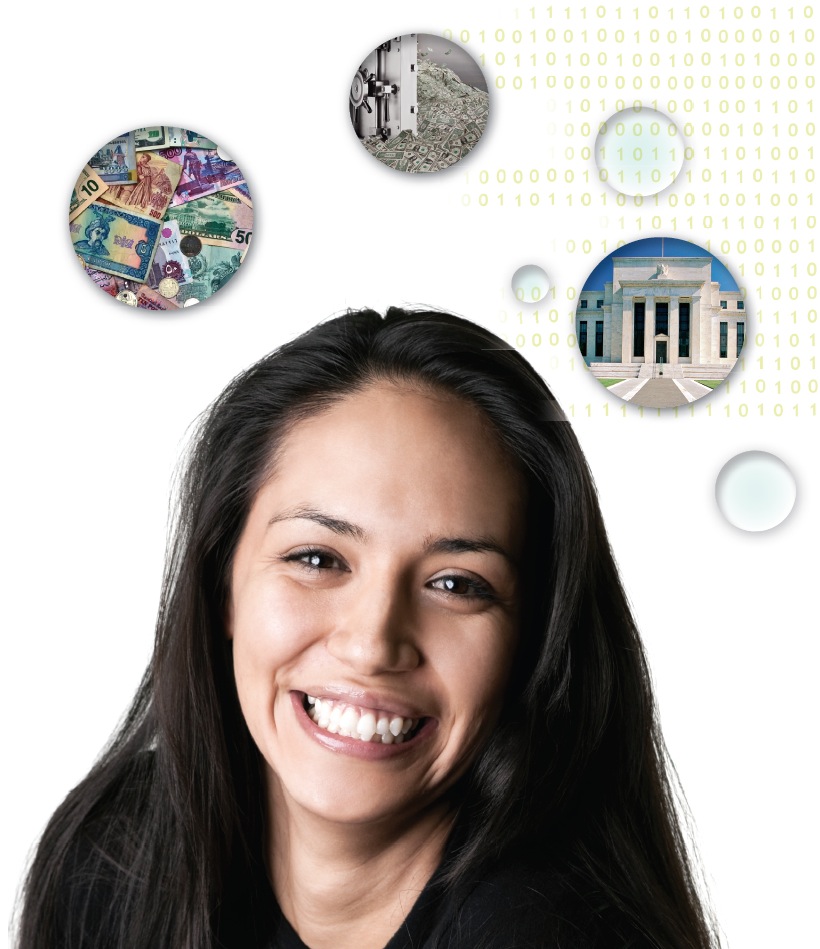Money, Banking, and the Federal Reserve System

Money, Banking, and the Federal Reserve System
SECTION22
- Module 69: Defining and Measuring Money
- Module 70: Banking and Money Creation
- Module 71: The Federal Reserve System

FUNNY MONEY !world!
In 2013, police in Lima, Peru, were stunned when they arrested a 13-
In recent years, Peru has become a major source for the production of counterfeit U.S. currency. Workers in these rings meticulously add decorative details to printed bills by hand, creating high-
The funny thing is that elaborately decorated pieces of paper have little or no intrinsic value. Indeed, a $100 bill printed with blue or orange ink wouldn’t be worth the paper it was printed on.
But if the ink on that piece of paper is just the right shade of green, people will think that it’s money and will accept it as payment for very real goods and services. Why? Because they believe, correctly, that they can do the same thing: exchange that piece of green paper for real goods and services.
In fact, here’s a riddle: If a fake $100 bill from Peru enters the United States and is successfully exchanged for a good or service with nobody ever realizing it’s fake, who gets hurt? Accepting a fake $100 bill isn’t like buying a car that turns out to be a lemon or a meal that turns out to be inedible; as long as the bill’s counterfeit nature remains undiscovered, it will pass from hand to hand just like a real $100 bill.
The answer to the riddle is that the actual victims of the counterfeiting are U.S. taxpayers because counterfeit dollars reduce the revenues available to pay for the operations of the U.S. government. Accordingly, the Secret Service diligently monitors the integrity of U.S. currency, promptly investigating any reports of counterfeit dollars.
The efforts of the Secret Service attest to the fact that money isn’t like ordinary goods and services. In this section we’ll look at the role money plays, the workings of a modern monetary system, and the institutions that sustain and regulate it, including the Federal Reserve.